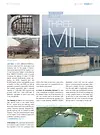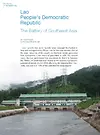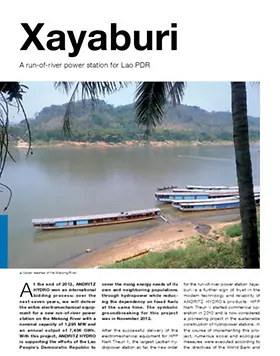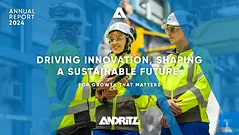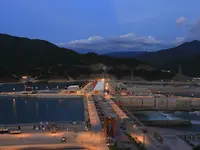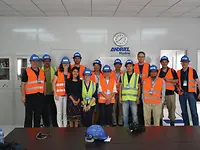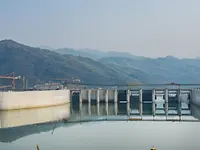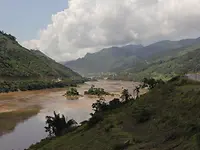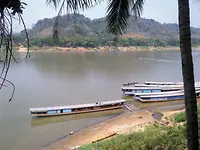How do you protect digital industrial processes?
What does “Sustainability” mean when you are building and operating a large hydroelectric power plant?
On the Mekong River in Laos, the Xayaburi Power Company (XPCL) has commissioned a hydroelectric power plant that is generating electricity for Thailand and Laos. ANDRITZ contributed significant parts of the electromechanical equipment and accompanied this mammoth project from start to finish. XPCL project manager Michael Raeder explains how ecological, economic and social goals were reconciled with one another.
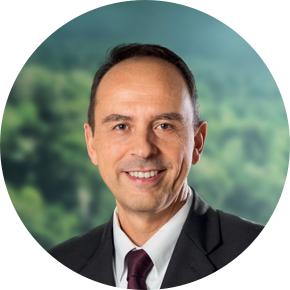
Mr. Raeder, in large projects like the Xayaburi power plant, stakeholders ask again and again, and justifiably, how deeply the project affects the established ecological and social environment of the surrounding area. How do you deal with this aspect of the project?
MR: Sustainability is at the top of the agenda for Xayaburi Power as well as for CK Power, the majority shareholder of XPCL. Considering that hydropower is a renewable, CO2-neutral energy source, the Xayaburi project with its installed capacity of 1,285 MW can truly be described as sustainable when the plant goes into operation. While power generation is the main purpose of the project, environmental and social sustainability have always played a key role in the project’s development as well. This applies in particular to the topics of fish migration and sediment management, which have received wide attention. The provisions made to mitigate potential impacts in these two fields are remarkable and also considered by external parties like the Mekong River Commission (MRC) as setting the benchmarks for any future projects, not just on the Mekong but also worldwide.

The Mekong is very rich in species diversity, so a concept was developed for the Xayaburi Power Station that enables the fish to migrate freely.
The Mekong is a river with very high species diversity and many species of fish that can migrate over long distances. What have you put in place to maintain the mobility of the wildlife – an important factor for the ecosystem?
MR: At the beginning, Xayaburi Power conducted a large number of site investigations and special tests. With the data obtained, the experts were able to develop a state-of-the-art concept that allows fish to migrate freely all the year round from the downstream to the upstream regions and vice versa. This migration is driven by the flow of the river and the natural instinct of fish migrating upstream to swim against the current. The power plant provides ways for the fish to migrate upstream by simply following these flows.
Countless fish have already passed through the project area since 2019. In addition, downstream migration of fish eggs, larvae and juvenile fish is enabled all year round by specific migrating facilities. Possible negative effects from passage through the powerhouse are mitigated by the fish-friendly design of the turbines delivered by ANDRITZ Hydro. Xayaburi Power has always taken the topic of fish migration extremely seriously, and the company has invested more than 300 million USD – about ten percent of the total construction budget – into building all of the fish passage facilities.
Sediment is an important resource in the Mekong River, as nutrient carrier for fish but also to maintain the river bank stability and the delta region in Vietnam. What impact does the power station have on the sediment?
MR: On the basis of extensive sediment studies and simulations, the project engineers have designed four large outlet gates positioned deep down in the river flow that are capable of routing the sediment-laden flows of the river into the tailwater. These flows occur predominantly during the rainy season, and over 90% of the total annual sediment is conveyed during the three-month flood period. At these times, deep outlet gates are opened to discharge any surplus water not used for energy generation and transfer the sediment from the impoundment to the tailwater. The waterways and turbines were designed and built to also allow and withstand the passage of sediment. Extensive modelling has shown that Xayaburi can be considered a “transparent barrage”, which means it will have a negligible impact on the overall sediment balance of the Mekong.
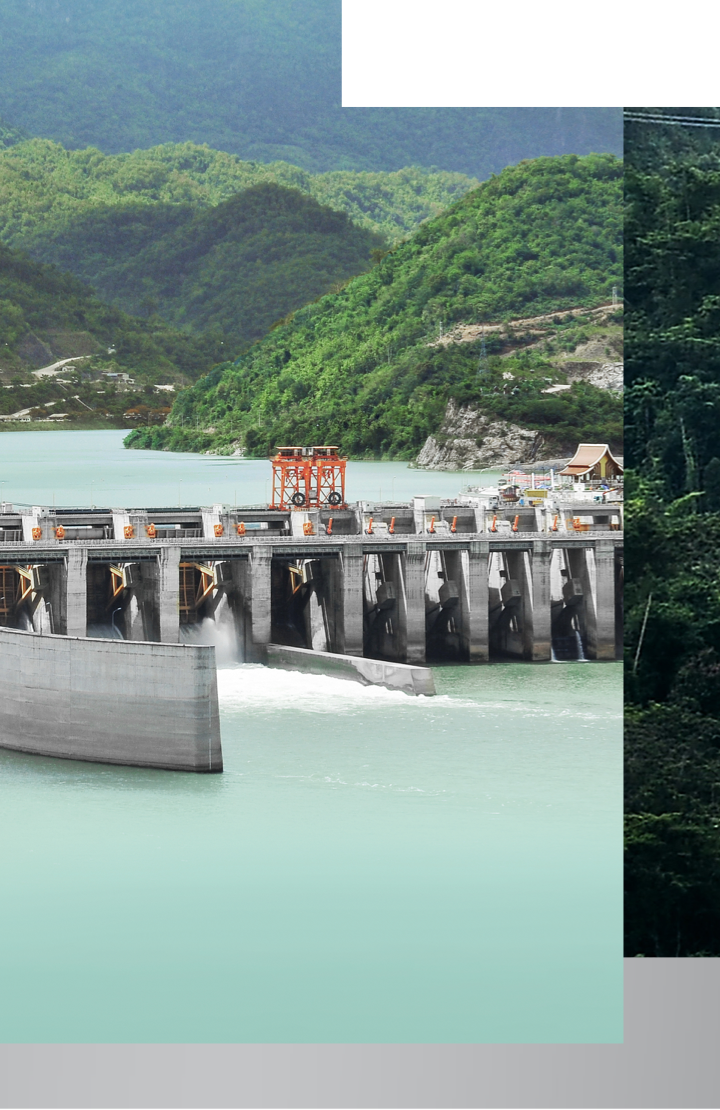
The ANDRITZ turbines have a very fish-friendly design.
Sustainability always has a social dimension as well. What does construction of the power station mean for local residents? What support have you provided and are you still providing for them?
MR: Considering the size of the project, with annual energy generation of more than 7,300 GWh, which is enough to supply energy to many millions of households, the number of required resettlements has been comparatively low.
But even if only a few households were affected, the resettlement of and compensation for the people concerned have nevertheless been carried out with care and respect. A total of 612 households with 3,036 occupants were part of the various programs initiated by the developer. This not only comprised resettlement in 669 new homes built by the company, but also land for agriculture or other forms of compensation, for example food or money. The aim was to enable the people to improve their overall way of living and achieve a sustainable income that is higher than the requirements formulated by the Lao government. For this purpose, special training was and still is being provided to the people affected so that they can gain knowledge and expertise in different professions. These programs will also continue for at least ten years after the project has been completed and the power plant has gone into commercial operation.
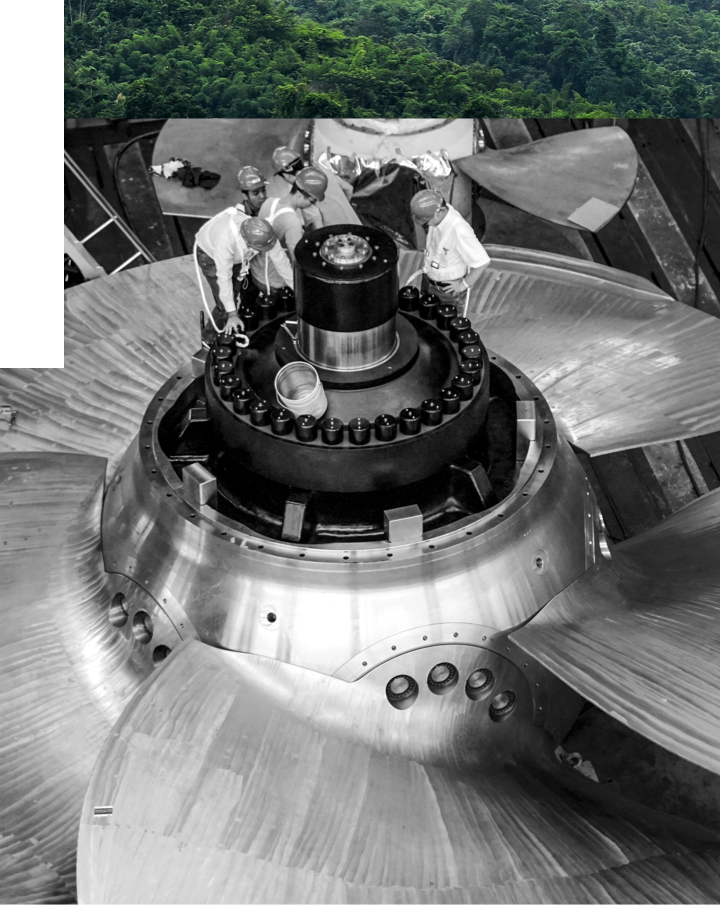
Ecological measures enabling sediment management or fish migration, for example, have top priority at Xayaburi power station.
At peak times, there were more than 10,000 people working on the construction site. What measures have you implemented in the occupational health and safety sector?
MR: The general contractor CH. Karnchang introduced a rigorous health & safety program for all workers right from the start. At peak times, more than 100 dedicated health & safety staff ensured strict compliance with international health and safety standards. This was necessary especially because the local workforce was often unskilled and unfamiliar with the use of standard personal protective equipment and safe working practices. These people were trained intensively before commencing their work on site. Continuous training and refresher courses were provided throughout the construction period. When conducting a project in the middle of the Mekong, it is paramount to prevent any environmental incidents that could potentially jeopardize the quality of the water. An intensive monitoring regime was introduced, frequently measuring the water quality both upstream and downstream of the power plant. Xayaburi Power is proud that no environmental incidents occurred during the entire project construction period.

Plew Trivisvavet, President & CEO, CK Power Public Company Limited and Ch. Karnchang Public Company Limited

Thanawat Trivisvavet, Managing Director, Xayaburi Power Company Limited and CK Power Public Company Limited




